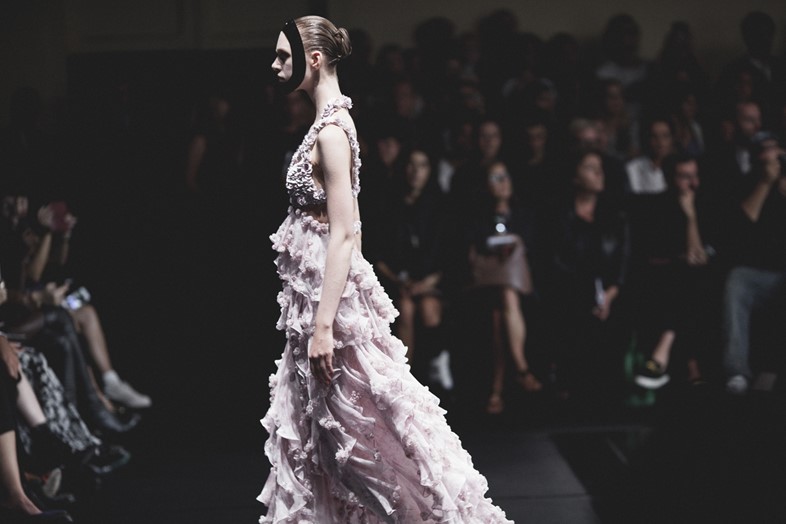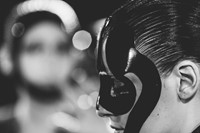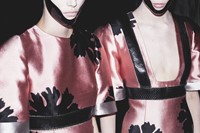We consider Alexander McQueen's fetishistic take on a Japanese garden, interlaced with signature macabre madness
Sarah Burton’s macabre take on a Japanese garden for Alexander McQueen S/S15 was a sinister blend of printed silk-jacquard tunics, antique kimonos and embellished hakama trousers in lantern red, black and silver. Faces were framed by strap-like lacquer masks created by seasoned make-up artist Pat McGrath, while hair was pulled back into square buns by Guido Palau. The signature McQueen punk edge was balanced by delicate, girly-sweet hand-cut ruffles and voluminous petal tiers, while intricate beadwork and harness tops echoed last season’s tribal clan. Was this a Samurai warrior, or a subservient Geisha? The beauty of Burton is in the subtlety with which she blends contrasts, rooted by historical references.

Burton toyed with Japanese influences for her S/S15 menswear show earlier this year, looking at Kabuki’s theatrical make-up and willowy leaves. Lee McQueen originally began his career working for Japanese designer Koji Tatsuno and later travelled to Japan with Burton. She continues to take inpisration from the abstract gardens, thatched architecture and ethnical garments of East Asia, but more than anything she captures that sense of Japanese dark fantasy and militant precision. Old Japanese horror depicts a similar sense of beauty and madness, interlaced with strict cultural tradition.
"Old Japanese horror depicts a similar sense of beauty and madness, interlaced with strict cultural tradition"
Burton’s little shop of Japanese horrors played out against Mark Quinn’s large white orchids: two sculputral light boxes suspended above a black lacquered wooden floor. Aptly titled Etymology of Desire and Prehistory of Desire, they had been shipped in on loan from the White Cube Gallery, London and acted as a magnificent stamp across the collection, symbolic of strength, rarity and beauty.
Text by Mhairi Graham






